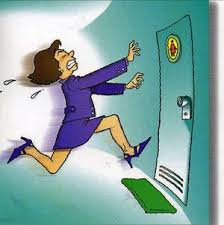Urinary incontinence refers to the inability to control the bladder. This results in the accidental or without conscious control discharge of urine from the urinary bladder. Urinary incontinence occurs from actions that stimulate pressure within the lower body or the abdomen; such actions may include coughing, sneezing or laughing. Common causes of urinary incontinence in women may include uterine prolapsed and urinary tract infections, whereas in men, prostatitis and an enlarged prostate are usually the cause. Women are more prone to urinary continence than men.
Signs and symptoms
Signs and symptoms of urinary incontinence include:
- Increased urge to urinate
- Loss of bladder control – loss of urine without conscious control
- Increases urinary frequency
- Lower back pain
Causes
Common causes of urinary incontinence may include:
- Stress incontinence. Weakness of the muscles in the pelvic floor, often results in accidental urination from laughing, coughing or sneezing
- Urinary incontinence. sudden uncontrollable urge to urinate
- Overflow incontinence. discharge of urine form the entire urinary bladder
Additional causes of urinary incontinence include:
- Drug side effects
- Spinal cord injury
- Diabetic neuropathy
- Nerve damage due to spine disease
- Hyperparathyroidism
- Neurologic disease such as Parkinson’s disease, Alzheimer’s disease, multiple sclerosis and senile dementia
Drugs that may cause urinary incontne include:
- Felbamate
- Tacrine
- Tacrolimus
- BCG
- Valrubicin
Treatment
Treatment for urinary incontinence depends on the seriousness of the symptoms and cause of the condition. For mild urinary incontinence, treatment may include bladder training, behavioral training and Kegel exercises. Persistent and severe symptoms are treated with prescribed medication, electrical stimulation of the muscles, which control urine flow and surgery.
Treatment options for urinary incontinence may include:
- Relaxation techniques
- Protective garments and pads
- Bladder training
- Delaying urination when you have to urinate
- Urinating twice so that you completely empty the bladder
- Maintaining a proper urinating schedule
- Kegel exercises to strengthen the pelvic muscles
- Medical devices such as urethral inserts and vaginal cone
- Biofeedback for urinary incontinence
- Stimulator implant
- Medication for urinary incontinence
- Radiofrequency therapy
- Botulinum toxin type A
- Bulking agent injections
- Surgery for urinary insentience
- Urinary catheter
Homecare treatment
Homecare for urinary incontinence include:
- Stop smoking
- Avoid nonsteroidal anti-inflammatory medication
- Avoid nonprescription decongestant medication
- Avoid nonprescription allergy medication
- Avoid sedative medication
- Take medication as directed by your doctor
- If you experience urinary insentience while laughing, coughing or sneezing, concentrate on holding your urine or try lifting something heavy
- Avoid urinating until you are sure you have to – empty your bladder completely while urinating
- Do not rush in the bathroom, take your time to empty your bladder completely
- Empty your bladder completely before you leave the house
- Wear clothes that can be easily removed when you have to use the toilet
- Lose weight if you are obese or overweight
- Women should wipe themselves from front to back to reduce risk of urinary infections
- Drink plenty of water
- Perform Kegel exercises
- Regular pelvic exams for postmenopausal women
- Men over 50 should have regular prostate exams
Related Articles You May Also Like
Related Video
